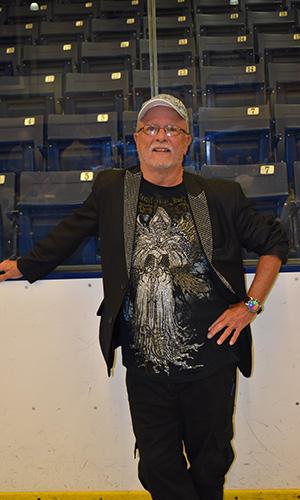
When George Neary ’70 was asked to give a toast during his Golden Anselmian reunion last spring, it didn’t take long for him to remember what helped define and bond his class together. Music.
“We were such an unusual class, and we had done so many different things, but the music, and who we were able to bring to campus to perform, was really unbelievable,” he says. “It was a great time to be a student.”
A great time, indeed—with Ray Charles, Dionne Warwick, Simon & Garfunkel, and Judy Collins being just a few of the famous singers he and his classmates helped host. Equally impressive, Neary’s generation helped set the tone for future generations of Anselmian music lovers, who over the next several decades brought some of the biggest names in music to campus—creating memories to last a lifetime, along with some serious bragging rights.
The Social Network
For Neary, it was his appointment to the Saint Anselm College Social Committee at the end of his junior year that led him to take on the role of college booking agent. “I started working on the committee the spring of my junior year, and I’m not even sure how the position came to me exactly, but we worked over that summer on lining up acts to bring to campus,” he says. Neary remembers working with a professional booking agent from the Boston area and being offered the option of bringing “Three Dog Night” to campus. “They only had one hit at the time, and we felt it was too much of a gamble, so we decided to go with the Paul Butterfield Blues Band. They had much more longevity and were better known,” he says.
Deciding on who to book was the tip of the iceberg when it came to making it happen. “A big part of this was figuring out how to pay for these bands,” says Neary. “I approached all of the surrounding colleges at the time and asked them to hold their autumn weekend during our concert date in order to sell more tickets—most of them agreed, and many attended our event, and it turned out to be a moneymaker.”
For another Social Committee member, Bob Sullivan ’75, who went on to work in the college’s advancement office from 1977 to 1997, most recently as the director of development, the experience was similar, and just as fun. “There were six or seven of us on the committee who volunteered to do this, and it was all a lot of fun,” he says. “We worked with a booking agent in Boston who told us the Allman Brothers would be willing to come to campus, but then they had to cancel because their guitarist [Duane Allman] was killed in a motorcycle accident, so they never came,” he says. “But we brought some great bands here, including Jethro Tull.”
The biggest name to come to campus during Sullivan’s time, however, was the Eagles. According to Sullivan, it was thanks to Rich Barry ’74 (deceased), who negotiated and booked the big band. “Our booking agent was able to get us a contract with the Eagles—they were just starting to become a name,” he says. “But right after we signed a contract with them, their hit “Desperado” broke, and they came back to us demanding nearly three times more than what we originally agreed to pay.”
Sullivan’s roommate and fellow Social Committee member, Jack Letvinchuk ’75, who went on to work in the college’s admission office for several years, remembers receiving special permission from the college to have a phone put into their room in order to talk to agents and their bands. “We had a phone installed in our room to deal with these bands, but in particular, the Eagles’ agent,” he says. “Having a phone in your room was so unheard of at the time.”
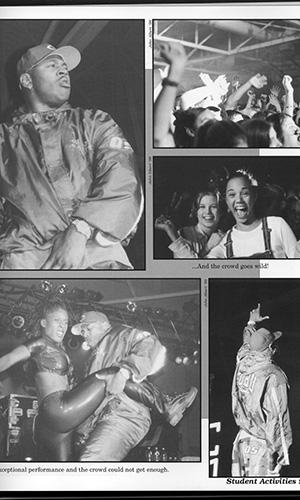
The personal phone worked, however, and Sullivan and Letvinchuk, along with Barry and other members of the Social Committee team, were able to negotiate with the band, landing somewhere in the middle. Letvinchuk still has a copy of that contract today. “I was the student body assistant treasurer, and I couldn’t believe I was negotiating with this band and responsible for handing over that check—what an amazing real-world experience.”
Both Sullivan and Letvinchuk are quick to make clear there were several people on the Social Committee who worked hard to bring these bands, especially the Eagles, to campus, and it truly took teamwork to make it happen. “There were a lot of good folks who had a hand in making these concerts a reality,” says Sullivan.
While a few decades may separate Neary, Sullivan, and Letvinchuk from John Gallivan ’01, their love of music and experience on the Social Committee (or what came to be known as Campus Activities Board during Gallivan’s time) and bringing bands to campus are strikingly similar. “At the end of my sophomore year, I was asked if I wanted to be the chair of the Social Committee by Aaron Frye ’01, who coincidentally is now the attorney general of Maine,” says Gallivan. “It was right up my alley, I loved planning events, and a lot of my best friends to this day were on the committee—not to mention my future wife, Gina Meneses ’01.”
For Gallivan and his fellow board members, the goal was about bringing a broad range of musical acts to campus that represented the varying musical tastes found on campus. “There were about 20 to 25 of us on the board and we all had different taste in music, so we looked at what we’d done before to make sure we didn’t repeat ourselves, but also what hasn’t been done before,” says Gallivan. Rapper LL Cool J fit that description. “I was only a freshman, but I remember LL Cool J being pretty expensive to bring to campus,” he says. “It was great to be able to get someone of his stature to play at a venue like the Carr Center—it was absolutely a show to remember, and for me, it was one of the first dates I had with my wife.”
Backstage Pass
Often what makes a great show is not only the music but the behind-the-scenes stories, and these were abundant across all generations of Saint Anselm concertgoers. Mark Kelleher ’85 will never forget an encounter he had with lead singer Huey Lewis of Huey Lewis and the News. “As part of the Social Committee, I helped set up the concert space and we hung out with the band a bit, who were practicing,” he says. “During a practice break, Huey himself offered to buy my distinctively gray peacoat [most are navy]. It was very cold, and my beloved grandmother bought the coat for me, so I declined—but then got a lot of ribbing from my friends there for not selling it to a celebrity.”
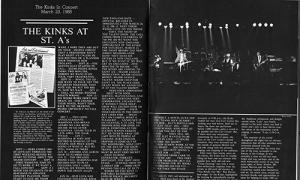
Kelleher also remembers another monumental band coming to campus—The Kinks. “We were all amazed they came to Saint A’s,” he says. “The Kinks had been around for a while, they were a classic band, but they had just released a big hit, “Come Dancing!” It was so impressive that we landed them, and many of our friends from the Boston area joined us for the concert—it absolutely gave us bragging rights.”
A key figure in bringing The Kinks to campus was Joseph Marron of the Dana Center, whose account of getting the band was included in the 1985 Anselmia yearbook. The Dana Center, which has been instrumental in bringing impressive acts to campus since its founding in the early 1980s, also led to some amazing behind-the-scenes stories, especially for Kimberly Cuetara Gibbons ’93. “I was the student house manager for the Dana Center, and two performers in particular I was able to become friendly with,” she says. “Rosemary Clooney visited twice, and the first time she came she singled me out and asked me to help her get ready, hold her inhaler, get her water,” she says. “The next time she came, she asked for me specifically to help her again.” After that first meeting, Gibbons says she would sometimes receive Christmas cards from Clooney until she passed. “I treasure them,” she says.
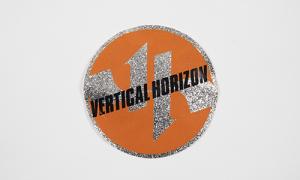
Gibbons also became friendly with Livingston Taylor, who has visited campus so many times (and is appearing at the Dana Center on February 3), that he received an honorary degree from the college in 1995. “We became friendly, and he would often come and talk with me before his show, and ask me what my plans were after graduation,” she says.
Gallivan had similar experiences with Howie Day, who performed in the Coffee Shop, and Vertical Horizon, who played at the Carr Center. “I remember setting up a room for Howie Day in the Jean Center for his changing room—he was such a nice guy, and really loved playing colleges—and he went on to have a pretty big hit with “Collide,” says Gallivan. “Vertical Horizon was maybe our best surprise,” he says. “They put on a great show and pulled in our broadest range of students—and they were really nice guys, so welcoming and friendly to everyone.”
The Good Ol’ Days
While A-list performances and notable concerts still pack seats in the impressive Dana Center, the likes of LL Cool J and the Eagles are not as common. Covid-19 played its part in keeping live concerts away, but the cost and the demands on campus made it difficult to continue to support bringing big concerts to campus. “The finances involved in hosting these concerts became really difficult,” says the college’s former dean of students and vice president for student affairs, Joseph Horton, Ed.D. ’77. “It wasn’t really doable anymore—back-up generators arriving on flatbed trucks, not to mention the band requirements, just made things prohibitive.”
Finding the space on campus to accommodate the number of seats and size of audience needed to fund a headlining concert became difficult, and other factors also played a part. “The Verizon Center [now SNHU Arena] also arrived in Manchester, and students would pay a lot of money to go see a great show there but not have a budget left to support attending something similar on campus,” says Horton. “And while most students in the 1970s and 1980s didn’t have their own car to travel to these concerts, in the late 1990s and into the 2000s, everyone began having their own car to go off campus to these shows.”
But while these big-name bands and musicians may no longer be coming to campus in the same way, the memories and bragging rights remain strong.
“It was entirely unusual for a college of our size to be hosting acts of this size and celebrity,” says Neary. “It gave us a chance to feel we were important, and part of the national scene—it gave us major bragging rights.” Neary also is quick to point out it worked both ways for most performers. “The acts who came to campus were thrilled to come here,” he says. “They were so happy to be at a smaller school and be received so well, and really connect with the audience.”
Gibbons feels the same. “The caliber of performers who came through campus stuns me to this day,” she says. “But interacting with that kind of talent taught me so much, most important being we’re all human … at the end of the day we’re all the same—I don’t think I could have experienced that lesson in humanity anywhere else other than at Saint A’s.”
Thanks to Archivist and Head of Special Collections Keith Chevalier, Avery Bacon ’25 and Thomas Belbin ’25 for their research contribution to this story.
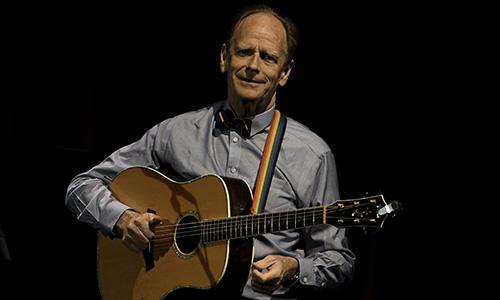
“Acutely aware that I’m on the stage that has hosted hundreds of presidential aspirants, I feel my music finding and bringing to rest the memories of all those eager ambitions. My music is clear and true. Sanity for the here and now. Cleansing and preparing the space for the hyperboles that will follow. I’ve called St A’s home for 38 years! What a joy to be back …”
—Livingston Taylor, H.D. ’95
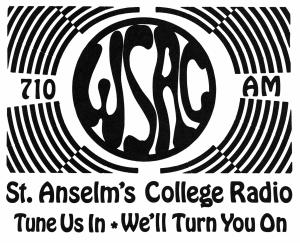
Radio Days
There was a time when college radio stations were a staple of every campus, and Saint Anselm College was no exception. Beginning in the late 1960s, a group of music-loving students took to the AM airwaves from the basement of the Cushing Student Activities Center to play songs that could be heard in the dining hall, dorm rooms, and with a little bit of luck, all the way down to the former U.S. Army Reserve building and current NHIOP.
Not much has been written about the radio station, but according to Saint Anselm College Archivist and Head of Special Collections Keith Chevalier, WSAC was an on-campus radio station employing the carrier system where listeners could hear broadcasts by plugging in a radio to an outlet. The radio signal was carried through the electrical wires.
Former WSAC DJ Ralph “Bud” Sargent ’74 says the carrier current station always had technical issues with the carrier current signal, and the radio dial location, 710 AM, was selected in honor of one of the station’s founding members. “The radio station was started by Joe Dusel ’72 with help from Bill Costa ’71,” says Sargent. “They chose 710 AM because Costa was in the class of 1971.”
For Jack Letvinchuk ’75, being a DJ provided a certain cool factor but also was a lot of fun. “When I was a freshman in 1971, I saw a flyer announcing they were looking for DJs, and I didn’t think I had a chance, but I interviewed with then-station general manager Pat Mathews ’74, and I got the job,” says Letvinchuk. “At first, being a DJ was all about being cool, but honestly, the life lessons I got from that experience—being accountable, having to think on your feet, communicating to a large audience—I’m so grateful, what a great experience.”
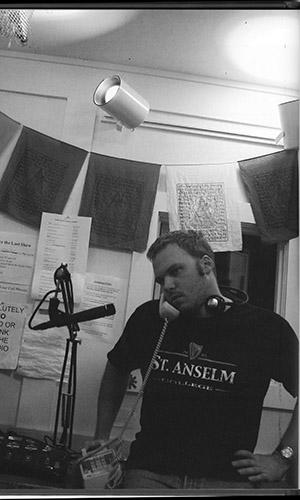
Letvinchuk remembers broadcast hours being from 4 p.m. to 9 p.m., with the coveted time slot being the 4 p.m. to 6 p.m. dinner hour, as it was broadcast in the dining hall and had the largest audience. “We would play softer blends during dinner, such as James Taylor, Carole King, Linda Ronstadt, Three Dog Night, Chicago, The Beatles, and Blood, Sweat and Tears,” he says. “But Friday, we would work in Steppenwolf, or something a little more psychedelic—we really just wanted to keep everyone happy.”
During these years, Letvinchuk fondly recalls taking many requests during his shows. “We were an all-male campus at that time, other than the nursing students, and we would get requests from guys asking, ‘I’m going to see my girlfriend on Saturday, can you play this song at this time?’ and we would,” he says. “We’d also have listeners asking for dates—first names only, we couldn’t use full names—over the airwaves.”
The college’s former dean of students and vice president for student affairs Joseph Horton, Ed.D. ’77 remembers the radio station in the basement of Cushing Center having all-glass walls and being loaded with records. “You could see who was broadcasting at all times,” he says. “There were great talk shows with students calling in, and they also would broadcast the basketball games over the radio back then.”
In addition to the cool factor, being a DJ also led to other perks. “I still have the demo record for the Eagles’ album “Desperado” we were sent, it has a hole punch in the lower right corner so it couldn’t be sold commercially,” says Letvinchuk.
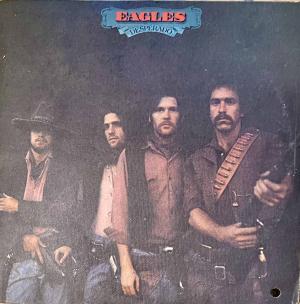
The demo record days also bring back fond memories for Sargent. “[As program director] this basically meant we had to con free records from record companies—we were very good at it,” he says. “We struck up a friendship with the program manager of the real, licensed WSAC in Lexington, Kentucky—he was helpful getting us records.”
As the 1970s moved into the 1980s, the radio station dwindled, according to Horton, but the radio club, The Radio Flyers, emerged, eventually broadcasting from the basement of Father Bernard Court. “By then, records were transitioning to tapes, and then CDs, and like any club on campus, it really comes down to student interest,” says Horton. “The quality of other entertainment options, cable TV, music available in different ways, such as streaming, caused interest to change.”
When it came to the WSAC’s audience, however, one thing remained constant. “We knew there would always be a monk or two who would be listening to our broadcasts,” says Letvinchuk. “Sometimes we would get a call from the monastery saying, ‘We think you’re getting a little over the top with your comments’ and we would tone it down.”
—K.G.D.
Greatest Hits on the Hilltop
Whether you’re nostalgic for the songs from your time on the Hilltop, or curious about what other generations of Anselmians listened to, this playlist offers a sampling of some of the biggest hits played at Saint Anselm. Stream for free on Spotify.
Rosemary Clooney
“Come On-A My House”
Ray Charles
“Hit the Road Jack”
The Paul Butterfield Blues Band
“Born in Chicago”
Dionne Warwick
“Walk On By”
The Byrds
“Turn! Turn! Turn!”
“Mr. Tambourine Man”
Judy Collins
“Hard Lovin’ Loser”
“Both Sides Now”
Simon & Garfunkel
“I Am a Rock”
“Mrs. Robinson”
Jethro Tull
“Living in the Past”
Eagles
“Hotel California”
“Desperado”
Bad Company
“Bad Company”
The Kinks
“You Really Got Me”
“Lola”
“Come Dancing”
John Cafferty & The Beaver Brown Band
“C-I-T-Y”
“On the Dark Side”
Huey Lewis and the News
“I Want a New Drug”
“The Power of Love”
Livingston Taylor
“I Will Be In Love With You”
“First Time Love”
The Lemonheads
“Mrs. Robinson”
“Into Your Arms”
Letters to Cleo
“Here & Now”
Squirrel Nut Zippers
“Suits”
G. Love & Special Sauce
“Baby’s Got Sauce”
“Cold Beverage”
The Mighty Mighty BossToneS
“The Impression That I Get”
Rusted Root
“Send Me On My Way”
LL Cool J
“Going Back to Cali”
“Rock the Bells”
“Mama Said Knock You Out”
Vertical Horizon
“Everything You Want”
Third Eye Blind
“How’s It Going to Be”
“Semi-Charmed Life”
Howie Day
“Collide”
Guster
“Satellite”
